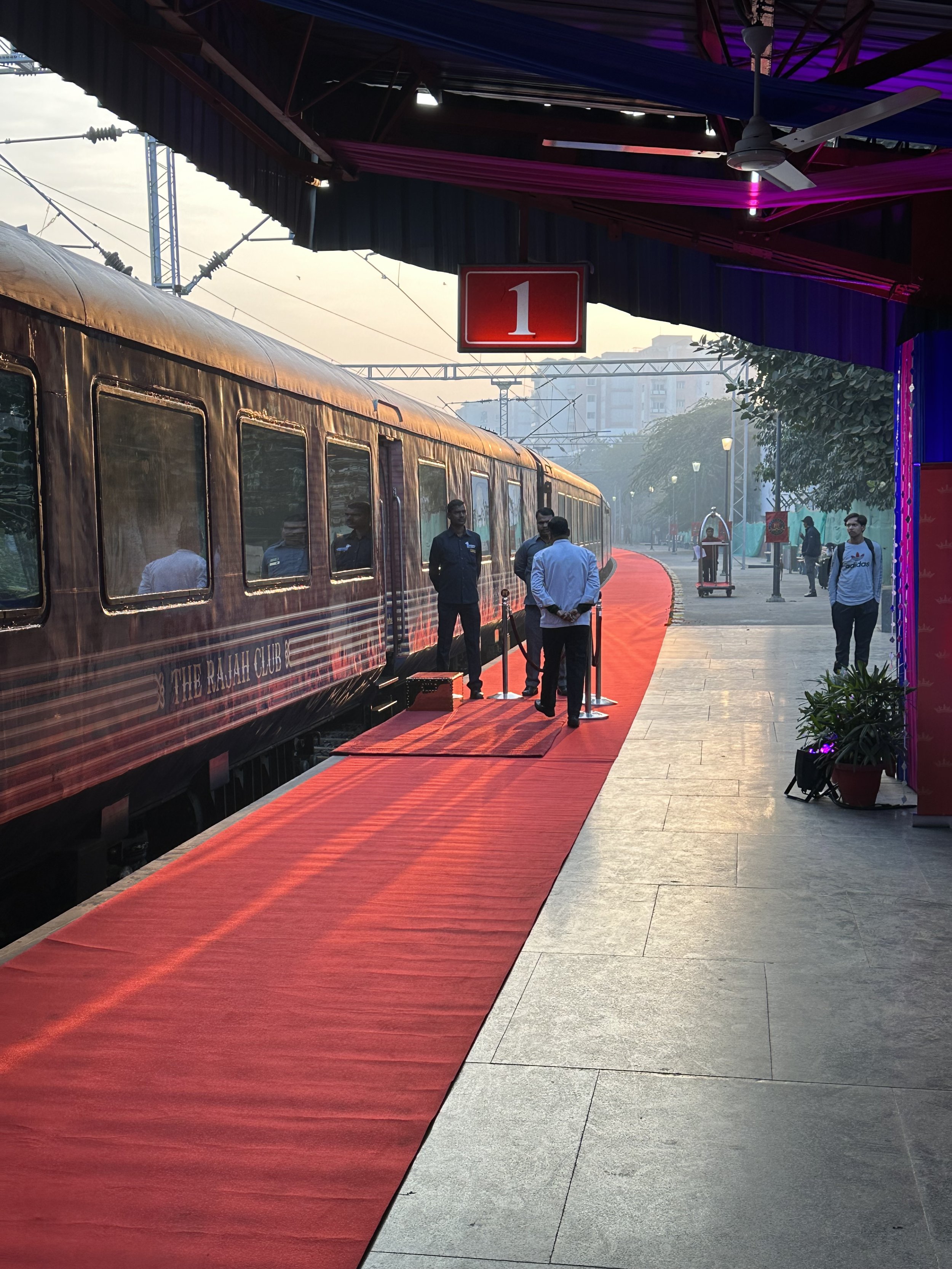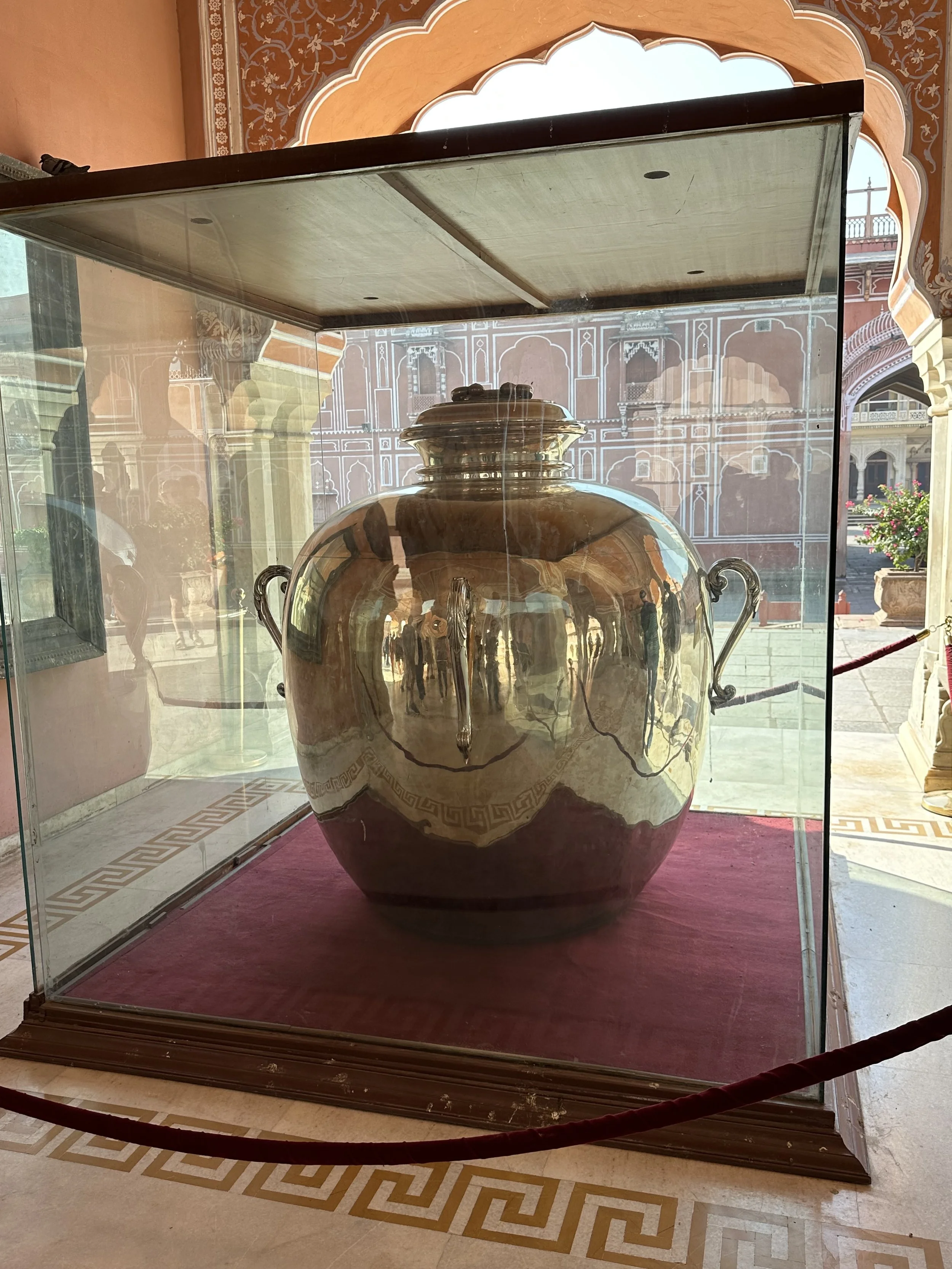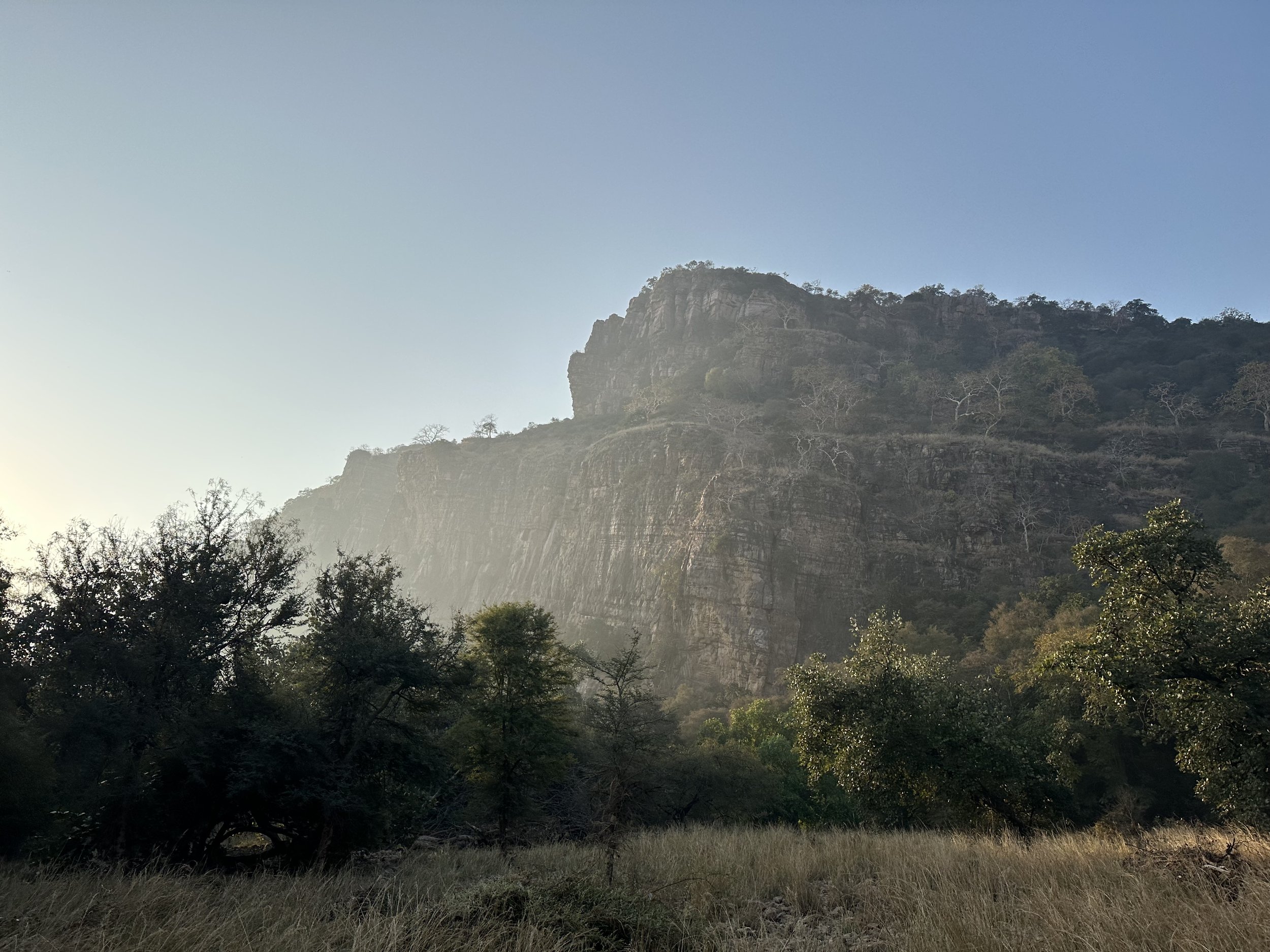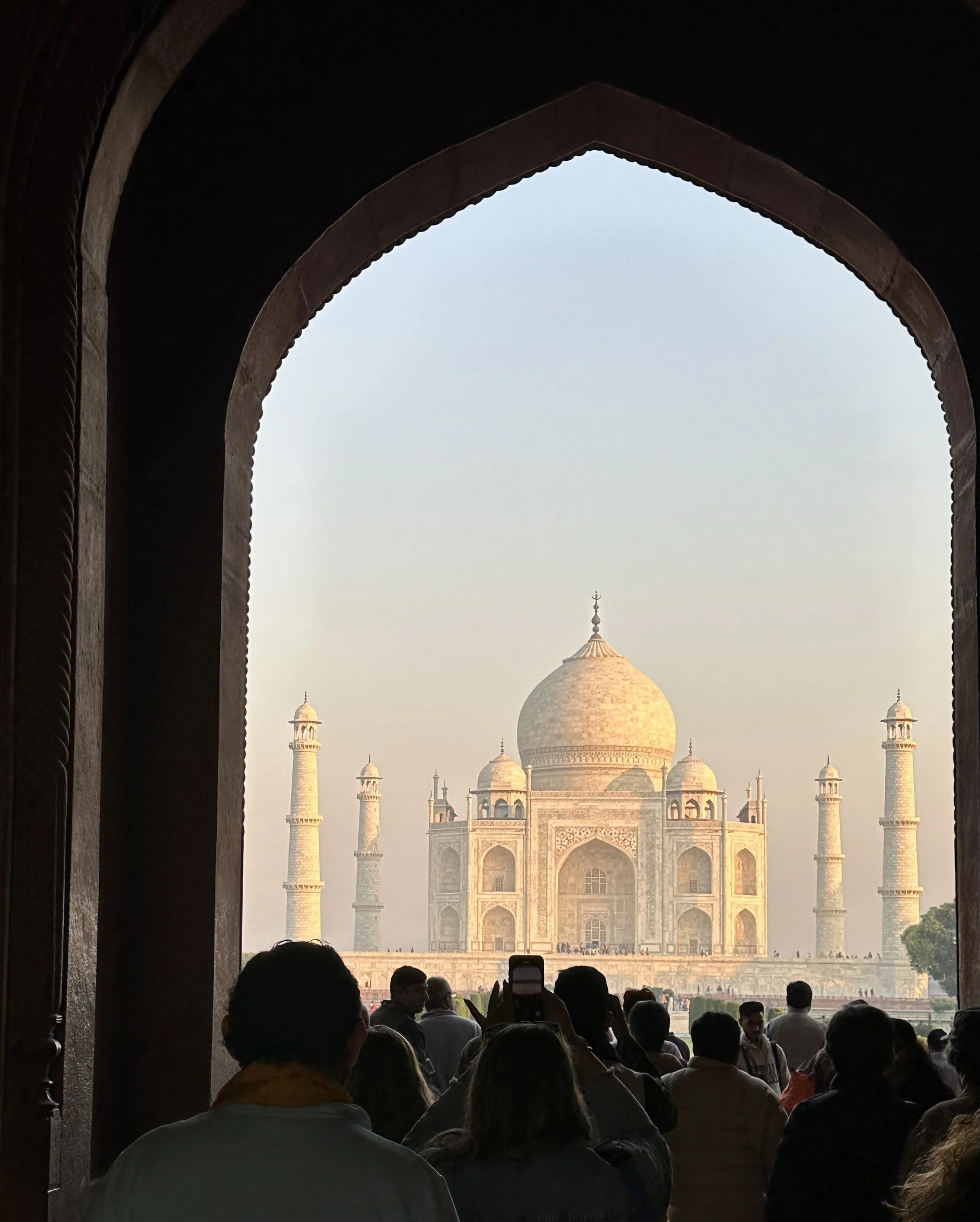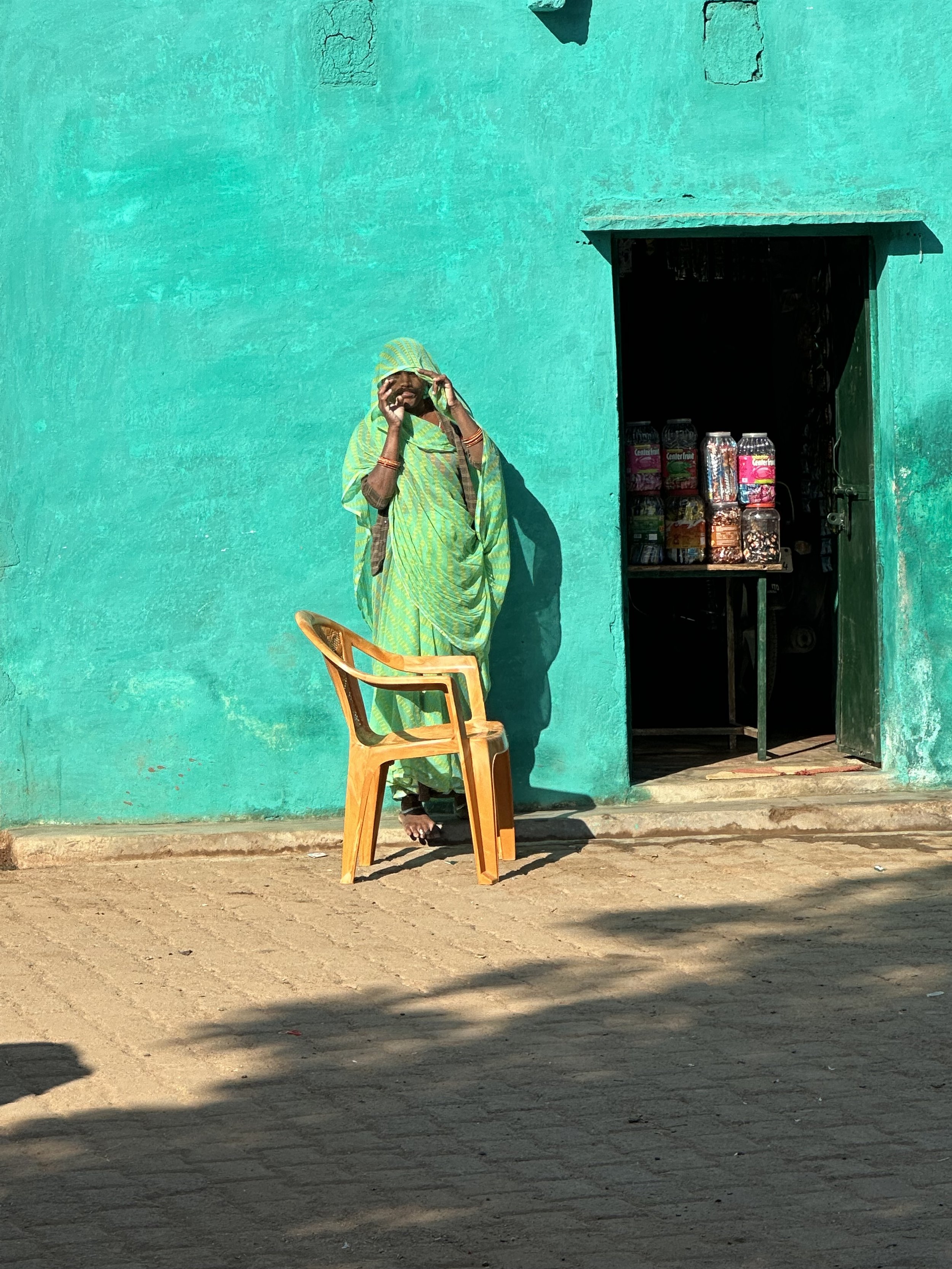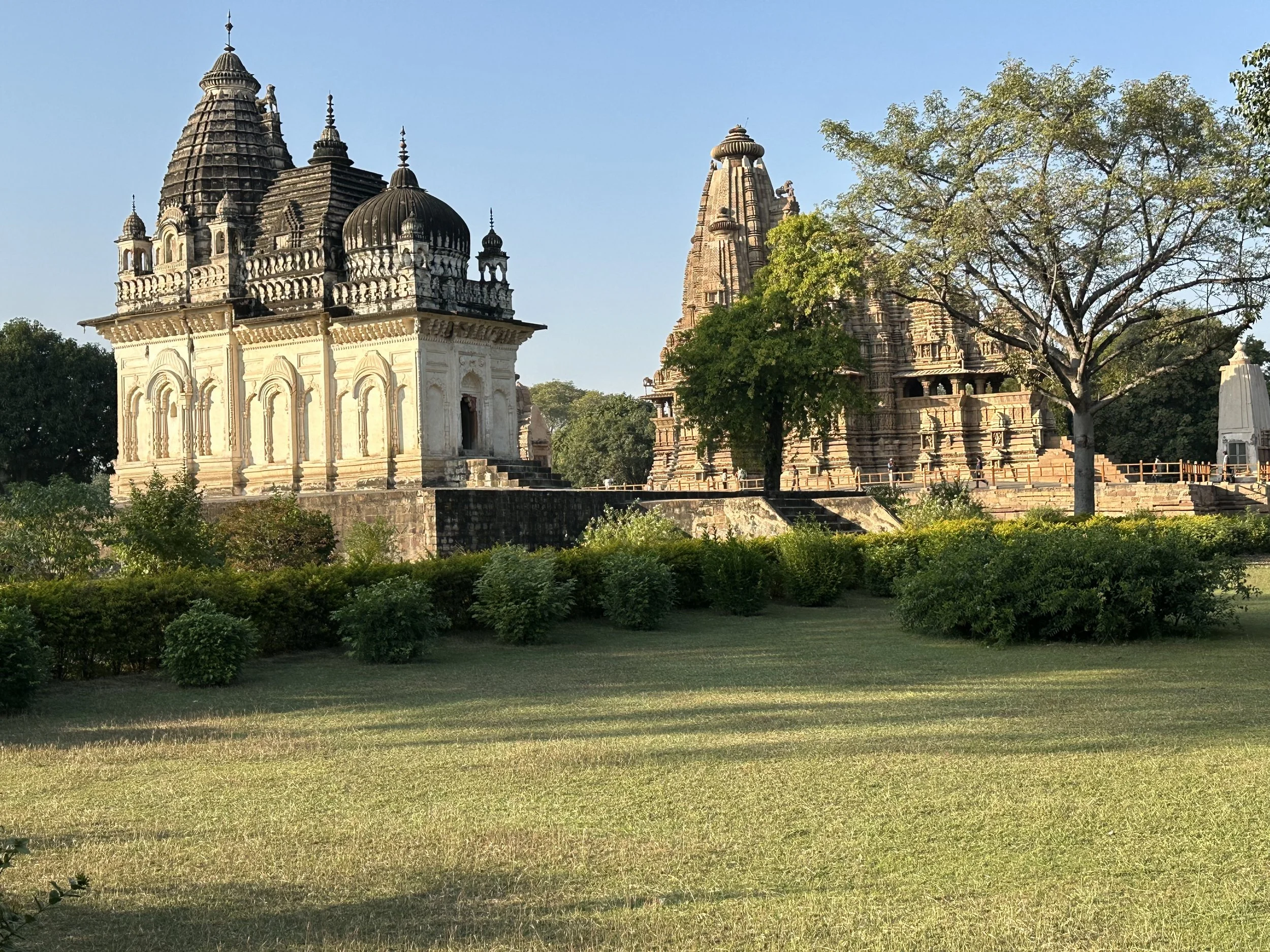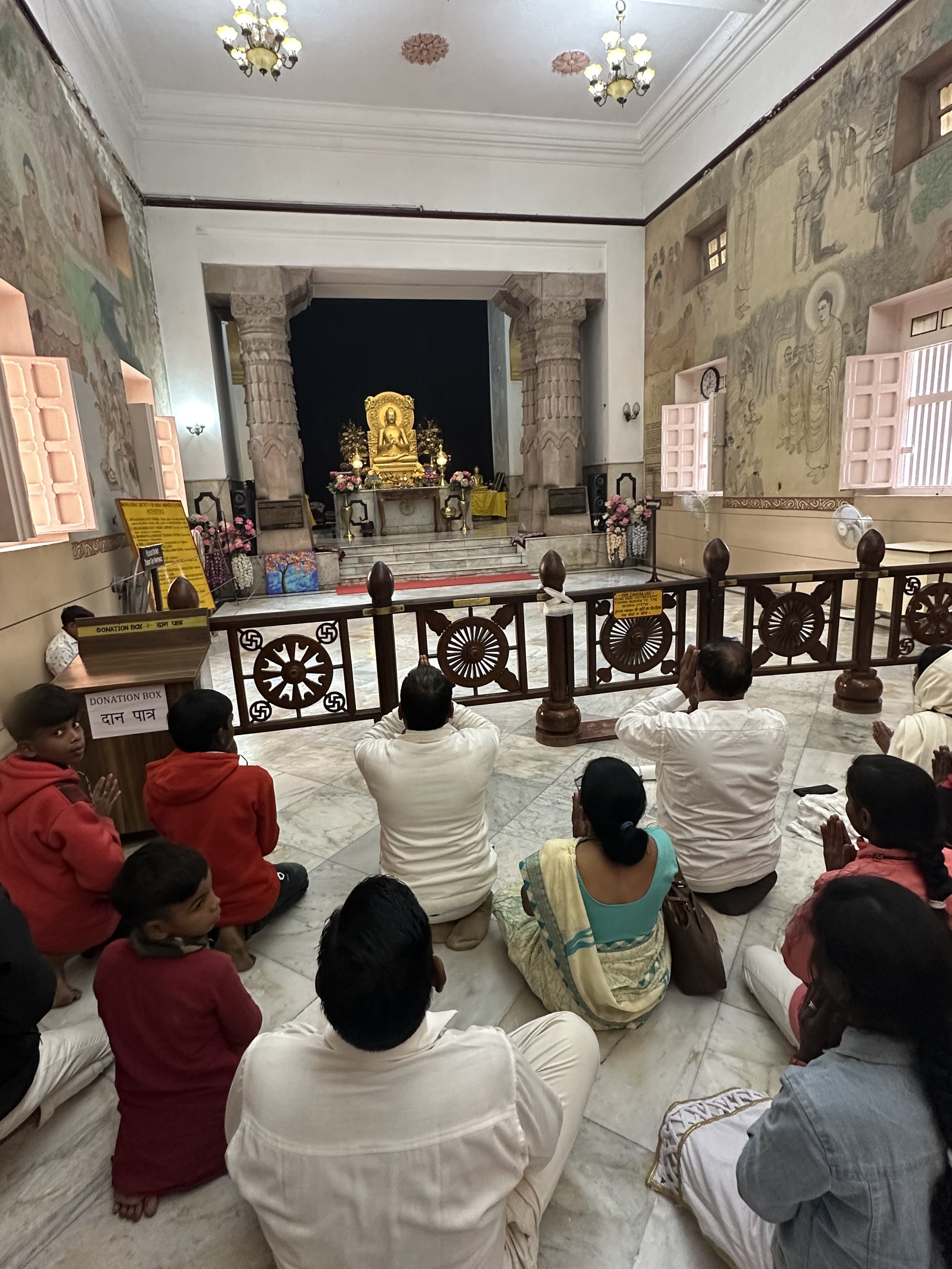India, Nov 18, 2022
India has been a travel priority for quite awhile. It took a few years and some false starts but we finally got there. I like to craft my own travel script but this one felt overwhelming and complicated. Since I’m not fond of the tour bus style of travel, we weren’t quite sure how to move forward. Wandering around on the web, I happened on the idea of a train tour. We love trains and this seemed like a fun way to keep the trip safe and simple. India is, as we all know, the third world on an enormous scale. A large country that’s home to well over a billion people, the vast majority living in an impoverished, and mostly polluted environment, and yet it’s just spectacular. The India we saw had unique, expansive landscapes, towering temples as if from some fantasy, and urban areas that swarm and steam.
One of the two unique dining cars on the express
We came up with three luxury train options, and after reading a lot of reviews, finally settled on the Maharaja Express. Starting with a direct flight from Chicago and a one night stay in New Delhi it was all train from there. You journey for a week between Unesco sights, sleeping onboard every night, dining in luxurious vintage railcars for all your meals with the exception of only a few occasions hosted during the tours. Everything is included in a wonderful week of cruising over northern India. All under the care of our attentive, wonderful tour hosts.
Welcome Aboard!
There were about thirty five guests on the train and we seemed outnumbered by the enthusiastic and dedicated staff. Nineteen cars long, and all for just the handful of us. Two dining cars, two lounge/bar cars, and an entire car devoted to the kitchen. The food was great, and considering it was all prepared on the train it was phenomenal. There were a nice range of options on the menu, but I stuck with the Indian cuisine the entire trip.
Rolling through New Delhi over brunch
We set out from New Delhi in the morning, and I couldn’t wait to get out of there. The air pollution is oppressive and left everyone with a cough. Although the air quality improved as we headed into the countryside, it never really cleared up to the level most of us are accustomed. On our way out of town we sliced deep through the city exposing the poverty and difficult life of most of it’s residents. Cinder block buildings, no plumbing, blankets for doors and campfires here and there. As we rolled along, the disparity all too evident between the “haves” and “have nots” made your heart sink. Like a movie where a medieval king on a jeweled palanquin is carried through the slums of his kingdom. I felt an uncomfortable sense of my good fortune to have been born in the right zip code.
Yet, people everywhere were welcoming and seemed delighted to have us to look at. Folks without much to their name, were busy, dressed well, and to my eye looked after themselves and their neighbors. Strange sights. A man getting his haircut by a barber standing near his ramshackle home with people all about. Children playing on the railroad tracks with their toys. We must have passed and seen hundreds of thousands of people. No one fighting, no one arguing, no one angry or scary looking. Along the way we even encountered some locals that wanted a picture with us white Imperialists, like we were movie stars. Happiness maybe had little to do with which side of the glass window you were looking through..
Amer Fort at night
Inlaid designs were a common site in temples, many using precious jewels
The train crept along most of the time, occasionally breaking in to a sprint and that usually at night. Our first stop was Jaipur. We arrived there later than planned and adjusted our itinerary to see the Amer Fort that evening instead of the next day. Despite being beautifully lit at night, I’m not sure if the palace isn’t best experienced by daylight. Regardless, it’s magnificent and massive. We traveled from courtyard to courtyard. The most interesting of them being the fourth courtyard, built for the many queens the Raja called his family. It was designed so these kept women and their entourages could live together and socialize in the open courtyard, yet afford complete privacy for the king. In the evening he could move by secret passages to any of the apartments for the hookup of his choosing. The queens always prepared just in case the horny bastard should happen by. His concubines never knowing who he saw that night, keeping jealousy to a minimum. As Mel Brooks said, “It’s good to be the king”.
Red carpet arrivals at destinations were the rule.
City Palace Jaipur
The next morning we toured the city palace in Jaipur, which is still home to the local royal family. All the palaces we saw were incredible works of art and after a while they almost blended together and overwhelmed us. Yet, there were several that stood out, more on that later. One of the highlights of the city palace were the giant silver jars that were used to carry water for the Raja when he traveled to England for the funeral of Edward VII. He was never without his “bottled” drinking water from the river Ganges (no thanks).
One of the two giant silver water vases
The next day was a little safari to Ranthambore National Park, our jeep crawling through the park trails in search of Tigers and other wildlife. The park is beautiful on it’s own, and although we didn’t spot one of the some eighty Tigers who live there, we did get close up views of the deer and bird life. This was once a royal hunting ground now put to better use as a reserve. We learned the work to protect and restore the Tigers in India has been quite successful.
Our Ranthambore safari starts with some wild peacocks
No need for a defroster
One of a kind gate
No tigers found this day, just beautiful surroundings
Later that day we visited Fatehpur Sikri on our arrival in Agra. This Unesco site was my second favorite site on the trip. This city was built in red sand stone and is in fantastic shape despite its age. It was built in 1571 and completely abandoned only twenty years later. They overestimated the ability to supply water, and realizing they couldn’t keep up, simply left. After that it was rumored to be haunted, so people stayed away, thus preserving it.
One of Fatehpur Sikri’s many buildings
A sophisticated water collection system and cistern wasn’t enough to save the city
Early the next morning came the Taj Mahal, just seeing it was worth the whole trip. We visited at sunrise to witness the first rays hit the white marble. It was awe inspiring. I don’t think I have ever seen a work of architecture anywhere that rivals it. The grounds butt up against a major river and include reflecting pools and a number of fine buildings all set symmetrically about the palace. But it’s not a palace, it’s a mausoleum, all built to hold the grave of a queen and later the Raja himself, who by all accounts outdid himself and even during his time was accused of going too far with his check book. I couldn’t believe the age of the building, because it’s in perfect condition.
First sight as you walk into the courtyard
It hardly seems real
Every inch a work of art
Its unmolested survival is due in part to the use of a multi religious mix of writings and art that adorns the building rendering it sacred to all it’s invaders. The architect is unknown for certain, but is believed to be Sedefkar Mehmed Agha, the same man who built the Blue Mosque in Istanbul. We remember our tour guide in Istanbul gushing praise of his genius. I won’t try and describe the engineering that protects and holds the Taj Mahal stable all these years, but suffice to say it is simply a marvel of human engineering. After the tour we had an outdoor lunch nearby complete with Ravi Shankar style tunes and fine champagne. A memorable experience with great food, sunshine, a gentle breeze, and the Taj Mahal overlooking our little luncheon.
Champagne and lunch
Just one more view
Thursday was a trip to the old town of Orchha to visit its ancient palace and then head off to a small village nearby. We traveled from the station first by bus to the palace and then made the rest of the journey by tuk-tuk. A swarm of the motorcycle powered tricycle cabs kicking up dust as we all set out. Our driver managed to get lost several times but we finally joined the group. The idea here was to give us a feel for daily life in India in the rural villages, which I’ll say was nicely done and very interesting. It was however by all accounts a bit staged. I think we were able to see more of how people really live on our detours.
Palace at Orchha
Orchha
Elementary school class in session
Cows rule
Retail establishment
We then drove to see the expansive grounds that hold the many temples of Khajuraho, another ancient and fine example of Hindu, Mughal, and Buddhist architecture. By this time we were bit overwhelmed by all the magnificent temples and sat out much of the exhausting walking lecture that ensued. Now these temples dating to the 9th century did have some peculiar artwork that spoke for itself. It had to be the oldest pornography found in the world. Actually all the hundreds of relief sculptures adorning the temple walls were meant to depict everyday life at the time, so imagine that. You can see a few more explicit artwork examples in the gallery.
Studio 54 way back when
Finally on Friday we made our last stop at Varanasi, or is it Kashi or Banaras? This is one of the oldest and most sacred cities in India, and a major pilgrimage site. This was the only stop where we were accompanied by an armed escort. We had a squad with us armed with automatic weapons. As we got off the bus here and there walking through the crowds, I noticed there were no other western tourists to be seen. It was the first and only time I felt a bit vulnerable despite our escort.
Here in Varanasi we saw the ancient Buddhist temples and sites where Buddha himself first began his preaching. But the highlight of the tour came after sunset when we set out on the river Ganges, our boat tour passing large religious ceremonies and cremation sites. It is believed that if you die here, and have your ashes spread on the river Ganges you will enter nirvana as the river flows to heaven. Modern navigation has done little to dispel the idea. On our boat tour we passed no less than two dozen cremations going on at different stages. Families praying along side and doing ritual bathing in the river. Further downstream thousands were gathered on the shore and in boats for a large religious celebration that included a number of priests praying in unison followed by some type of ritual anointing. It’s was all a true “where the hell am I” experience, the sort of cultural revelation we all long for in our travels. Then we made our way back to the train for one last nightcap as we sped to back to the New Delhi station where it all began. The next day we disembarked the train and headed straight to the airport for a long flight home.
Setting out on the Ganges River
India is at once inspiring and depressing. So many people living on top of each other. Somehow sharing limited resources. A country with several languages, religions and ethnic groups. One guest with us who was from the south of India told me he understands less of the language in the Dehli area than I do, English being the only language that spans the whole country. There is so much to experience there; so many beautiful Unesco sites, the great food, the diverse culture. In contrast there is bad air, and litter spread on a scale like I’ve never seen. In places in fields and along the right of ways there might be a wide layer of plastic and trash nearly a foot deep. People, men specifically, pissing wherever they choose. Stray dogs everywhere and cows that act like they own it all. One cow suddenly went after one of our new friends from Yorkshire and gave her a severe bruise. We speculated she wore the wrong color blouse. Then again maybe the cows hold some grudge against the Brits. Kidding aside, it was a bit scary. Speaking of the British, in my view one can’t help but feel their long occupation left an influence that today is still an integral part of what India is, from the language to game of Cricket.
I think India is a place I would recommend to everyone to experience and I enjoyed the trip immensely, but for me one week on a train was just perfect and just enough.


